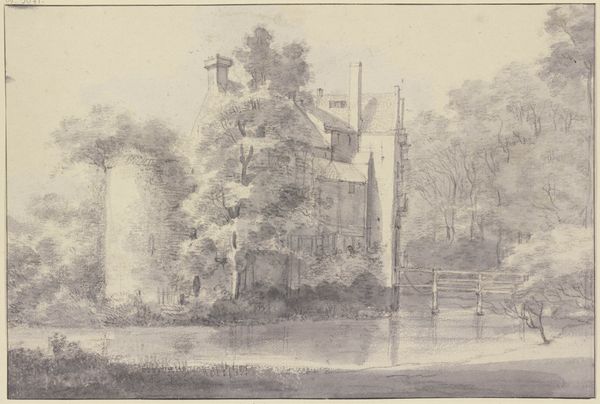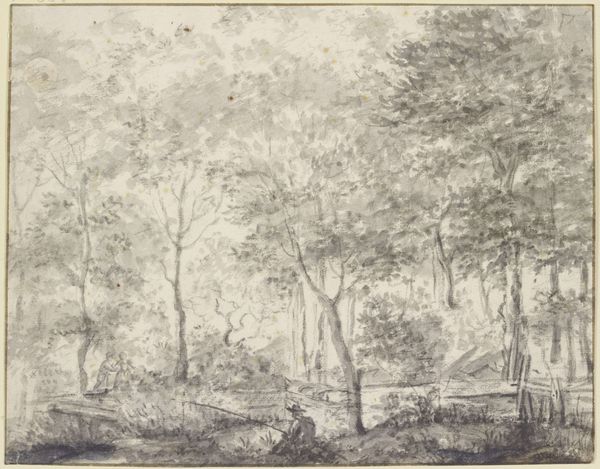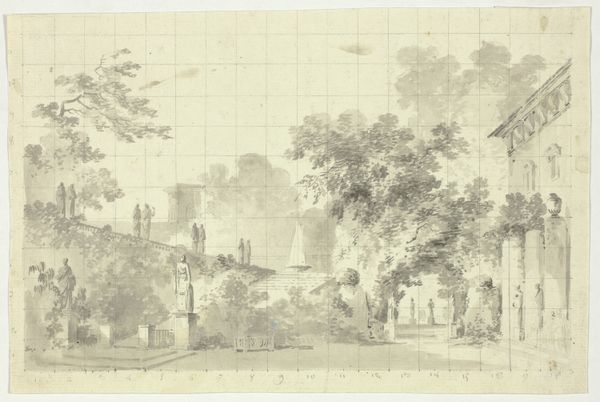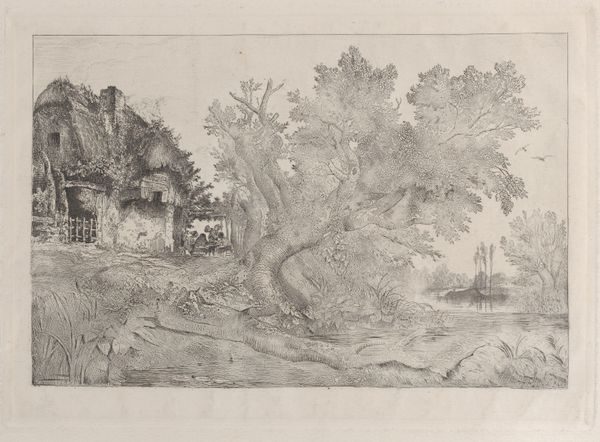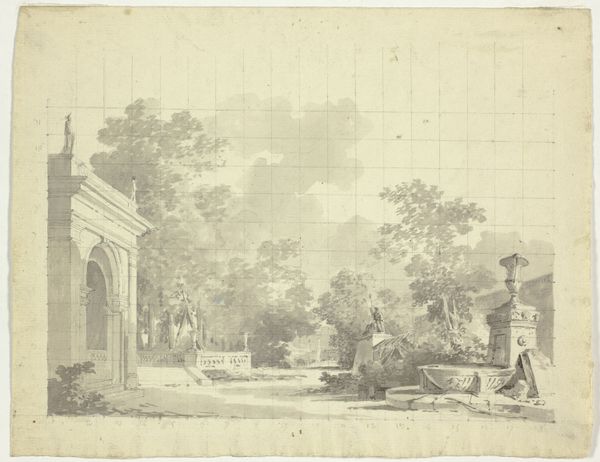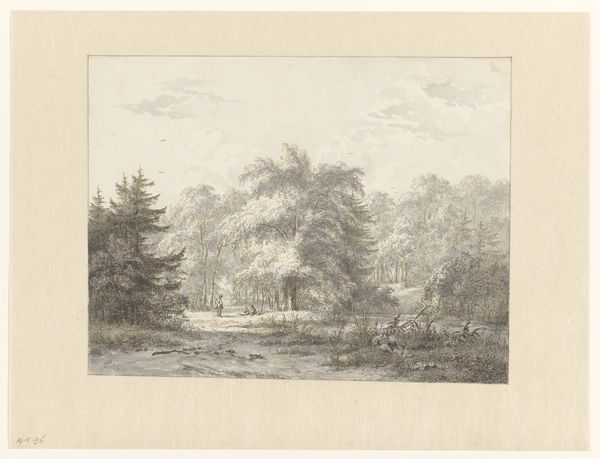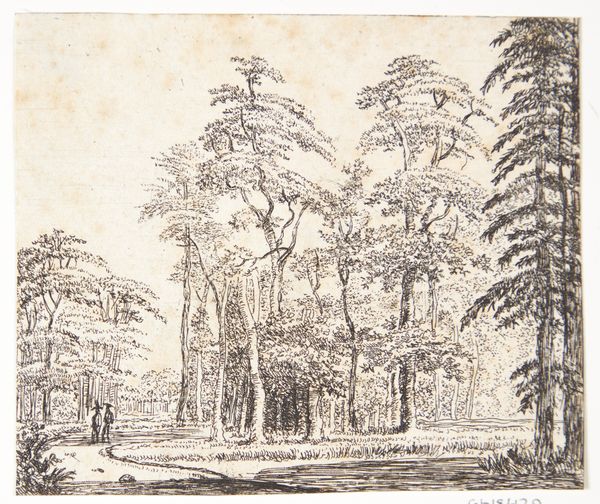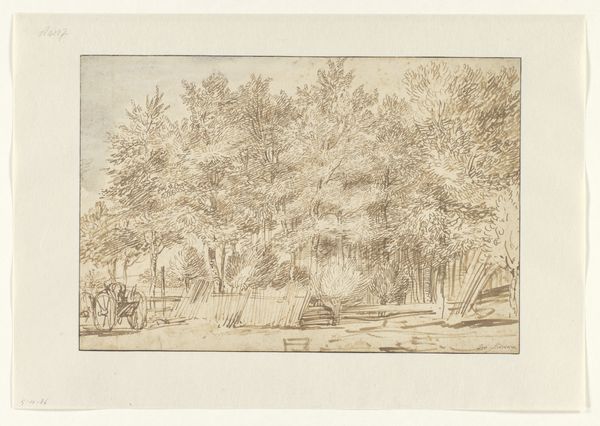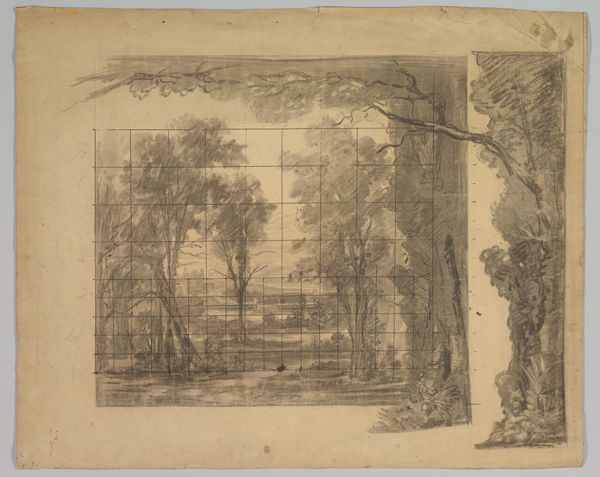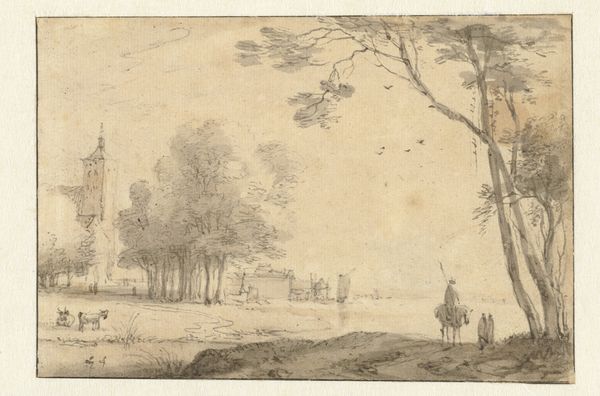
drawing, print, paper, watercolor, ink
#
drawing
#
ink painting
# print
#
landscape
#
paper
#
watercolor
#
ink
#
coloured pencil
#
romanticism
#
cityscape
#
watercolor
Dimensions: Sheet: 10 1/4 x 13 1/8 in. (26 x 33.3 cm)
Copyright: Public Domain
Curator: Here we have Karl Blechen’s "Inundated Ruins of a Monastery," created sometime between 1815 and 1840. The piece uses watercolor, ink, and colored pencil on paper. Editor: My first impression is one of melancholy. The subdued palette creates a somber mood, heightened by the delicate rendering of decay. Curator: Absolutely. Blechen, a key figure in German Romanticism, often explored themes of nature's power over human structures and institutions. Consider the period, Europe recovering from the Napoleonic wars, facing new political orders and a rising sense of uncertainty. Ruined monasteries held potent symbolism. Editor: Indeed. Looking at the formal elements, the composition emphasizes verticality, yet the mirroring in the water softens the strong architectural lines, creating a sense of disintegration. Blechen’s use of light, or lack thereof, diminishes any sharp focus. The subtle washes give an ethereal feel. Curator: Notice how the natural elements frame the ruin: Trees on either side almost reclaiming the stone. Blechen seems to be suggesting that nature, and time itself, is the ultimate arbiter of power. Editor: Yet the cross remains starkly upright, a vertical assertion amidst the horizontal ruin. Is this a flicker of hope or defiance in Blechen’s vision? Curator: That's precisely the kind of ambiguous questioning Romanticism thrives on! He critiques institutional authority, but holds a certain faith. It's likely also a critique of the secularization underway in Europe. The romantic period engaged directly with questions of religion and nationhood. Editor: Well, after studying Blechen’s play of light and shadow and considering how that supports a message of defiance or endurance, my takeaway would have to be a strong assertion that even in the face of nature's forces, echoes of culture refuse to be silenced. Curator: A wonderfully poignant reflection on a historical period struggling to maintain faith amid vast transformation.
Comments
No comments
Be the first to comment and join the conversation on the ultimate creative platform.
